Building Community Ownership of Local Health Facilities in Sierra Leone
Why do many pregnant women throughout Sierra Leone prefer to deliver their baby at home with the assistance of a Traditional Birth Assistant, even if they live in the same village as a health facility where a trained health worker could help them?
Why do some women opt to travel many miles to seek treatment for their sick child, rather than going to their nearest health post?
There are many reasons why women choose not attend their local health facility or not attend any facility at all when they need health services, however two of the most common are a negative relationship between the community members and facility staff and poor conditions at the facility. Both of these issues worsened during the Ebola outbreak, as mistrust of health care workers became widespread and nearly all funding for health facilities was diverted to Ebola treatment and prevention.
A few months ago, the Health Communication Capacity Collaborative (HC3) and implementing partner GOAL began organizing dialogues in communities throughout the Tonkolili, Bombali, Port Loko and Western Rural and Urban areas, to improve relationships between communities and health facilities, as well as improve the conditions at community health posts. At the first meeting, community members discussed the aspects of their local health facility that they wanted to see improved, to make the facility more welcoming and functional. At a separate meeting, HC3 and GOAL also consulted facility staff on their needs and desires for the facility. The two groups were then brought together in on-going dialogue, to prioritize the areas for improvement and come up with “makeover” plans that described how the community would work to help make these changes.
Early on there were signs of the dialogues helping to repair relationships between facility staff and community members, and participants appreciated being involved, as reported in a previous post on improving the quality of health care services and facilities. But when the makeover activities started up, it became clear that the participatory process was helping to motivate all participants to get involved in the facility makeovers and also to build a sense of responsibility and community ownership of the health facilities.
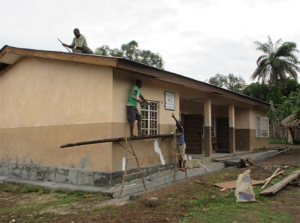 Bob Lamin, a GOAL Community Health Facilitator based in Port Loko district, explained how the dialogues and community-led makeovers, were changing the mindset of participants: “Being that we gave them the opportunity to talk about the things that they want to change, I think that is where we struck it all. That motivated them to participate in whatever meetings or activities that we are doing because they are not just beneficiaries, they are partners in whatever we are doing.”
Bob Lamin, a GOAL Community Health Facilitator based in Port Loko district, explained how the dialogues and community-led makeovers, were changing the mindset of participants: “Being that we gave them the opportunity to talk about the things that they want to change, I think that is where we struck it all. That motivated them to participate in whatever meetings or activities that we are doing because they are not just beneficiaries, they are partners in whatever we are doing.”
Seeing themselves as active partners in improving their local facility has even motivated participants in some communities to go beyond what was initially planned. Adamu Kargbo, Chairman of the Malama Facility Management Committee, in Western Area-Urban, observed that there was such a strong sense of responsibility for improving the facility that the community took on additional work after seeing the planned repairs underway.
Community contributions to the planned makeover activities have come in the form of materials such as sticks for fencing, tools and equipment, skilled laborers such as masons and carpenters, and most importantly, time and effort. The additional work and contributions that have been noted at various facilities have included the construction of fencing, cleaning up brush around the facility grounds, food and water brought to the paid laborers and even people from beyond the facility catchment area coming to participate in the makeover.
Chief S. Conteh, of Kanikay in Bombali, summed up the motivation and involvement of communities with a proverb: “If someone is scrubbing your back, you have to throw the water.” Regardless of how big or small their contribution is, young and old, men and women, people from near and far, have all been helping to “throw the water” to improve the health facilities that they now see as theirs.
The community involvement, cooperation and ownership of the makeovers has brought about remarkable transformations at many facilities that have sparked excitement and pride. “We have been dreaming for this place to be improved and the dream has come true,” said Chief Gbakie who represents a community near the Malama facility. Chief Gbakie recognized that even after the makeover is complete, their work will not be done. It will then be up to all who participated in the makeovers to spread the word among their family and friends about the newly improved facility and the importance of attending the facility when they are not feeling well and for routine services.
Many facilities are already seeing increased attendance, with some people coming just to see the repairs and improvements but others coming in for services such as antenatal care or delivery. Community mobilizers, local leaders and facility staff have attributed this increase in attendance to the community dialogues. As one GOAL representative in Port Loko noted, through the dialogues they are “not just fixing the facility but they are helping people learn how to use it.”
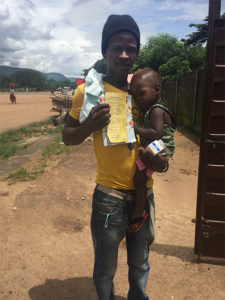
Father and child headed to the newly improved Community Health Post in Kissi Town, Western Area Rural.
At the facilities, the health workers see this increase in attendance as a blessing but also a challenge, since they are now receiving more patients than they are able to provide care to. Even after the makeovers, many facilities still lack sufficient space for waiting areas as well as seeing and treating patients, they may not have enough supplies or medicines, and some only have one clinical staff who is responsible for everything. HC3 and GOAL field staff are working to address these larger issues, often taking them to district-level representatives of the Ministry of Health and Sanitation.
Despite these challenges, there is a great sense of hope at the facilities and in the communities that have been engaged in the dialogues and makeover activities. The cooperation and community ownership of the facility makeovers will hopefully serve as a foundation for continued community participation in keeping facilities clean and taking care of any repairs and improvements that may be needed in the future. At the Warima facility, in Port Loko, the Facility Management Committee has already committed to taking time during their monthly meetings to identify any repairs or improvements that need to be done and collaborating with the community to complete the work.
Furthermore, with the better condition at the facilities, the improved relationships between facility staff and communities, and the increase in facility attendance that is already taking place, there is hope that the makeover process will improve health of women and children in communities throughout the Northern and Western areas of Sierra Leone. For, as Chief Alpha, of Petifu Mayepoh, explained, “when the [facility] is fine like this, people will be happy to come.”


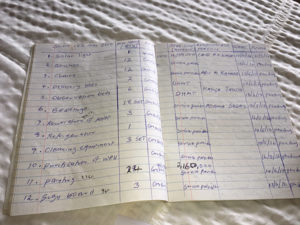
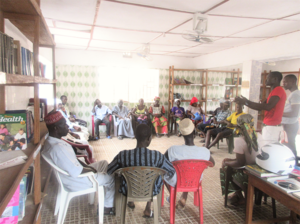
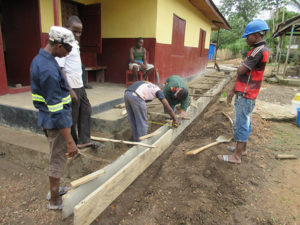






Leave a Reply
Want to join the discussion?Feel free to contribute!